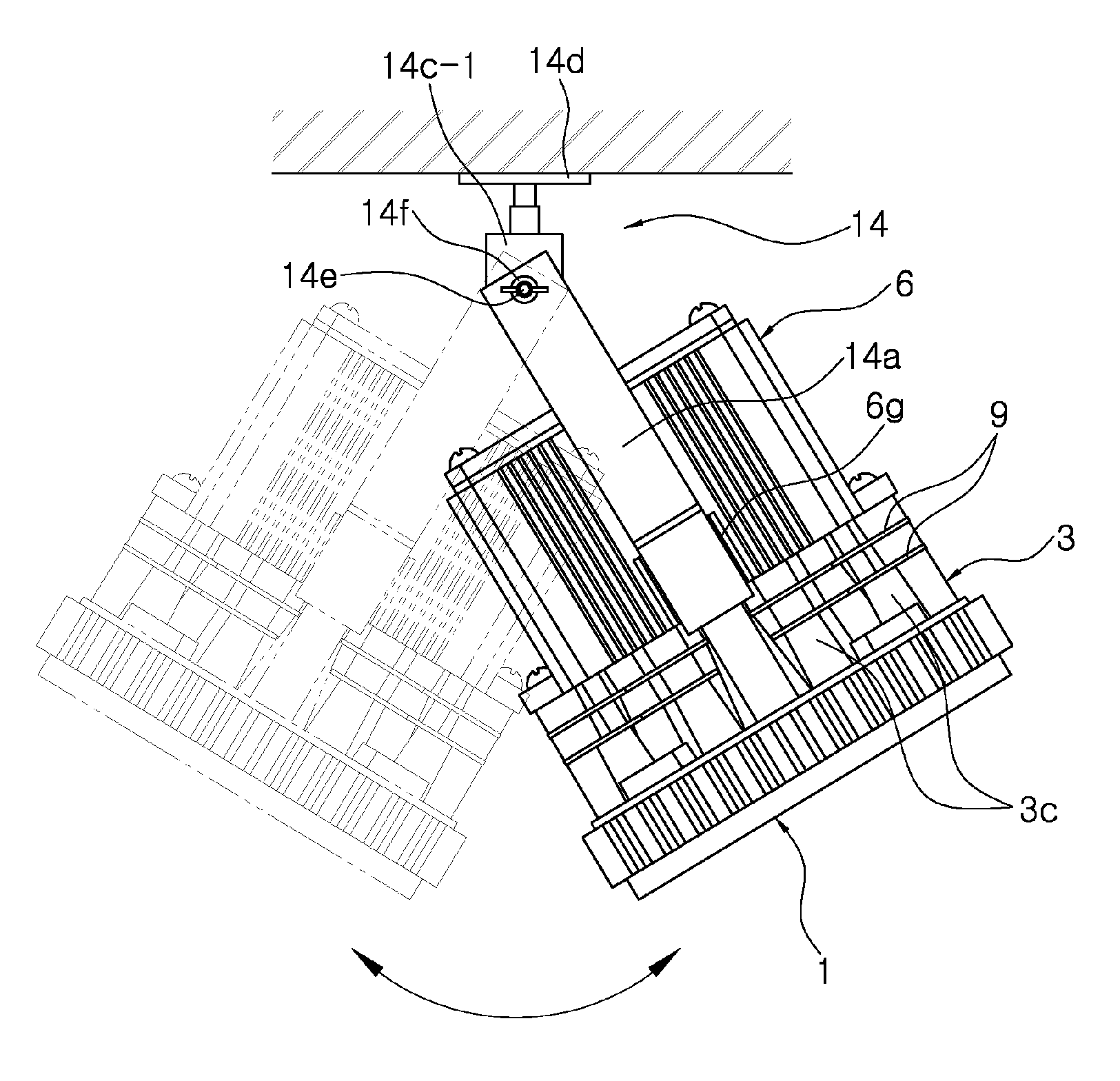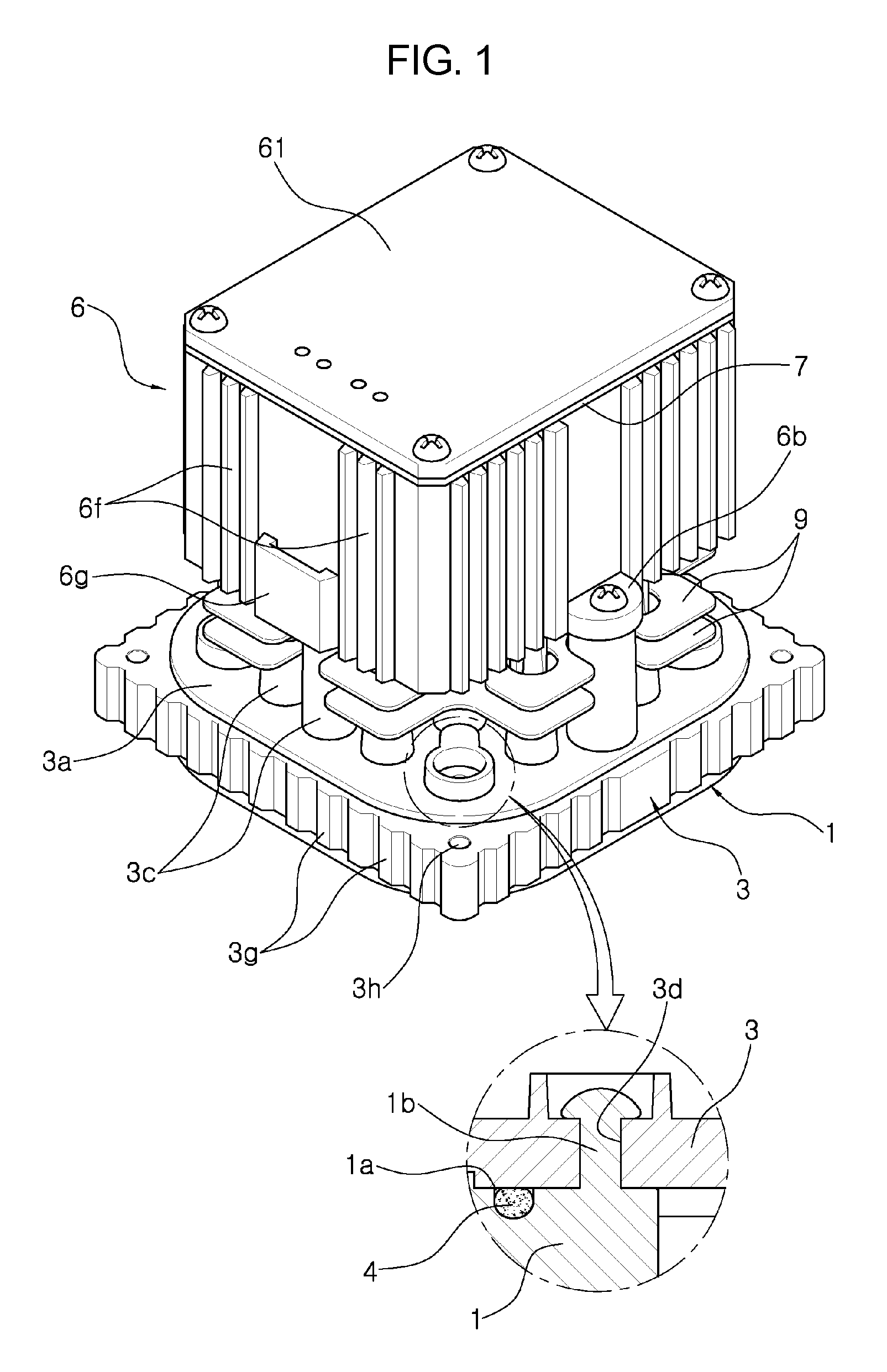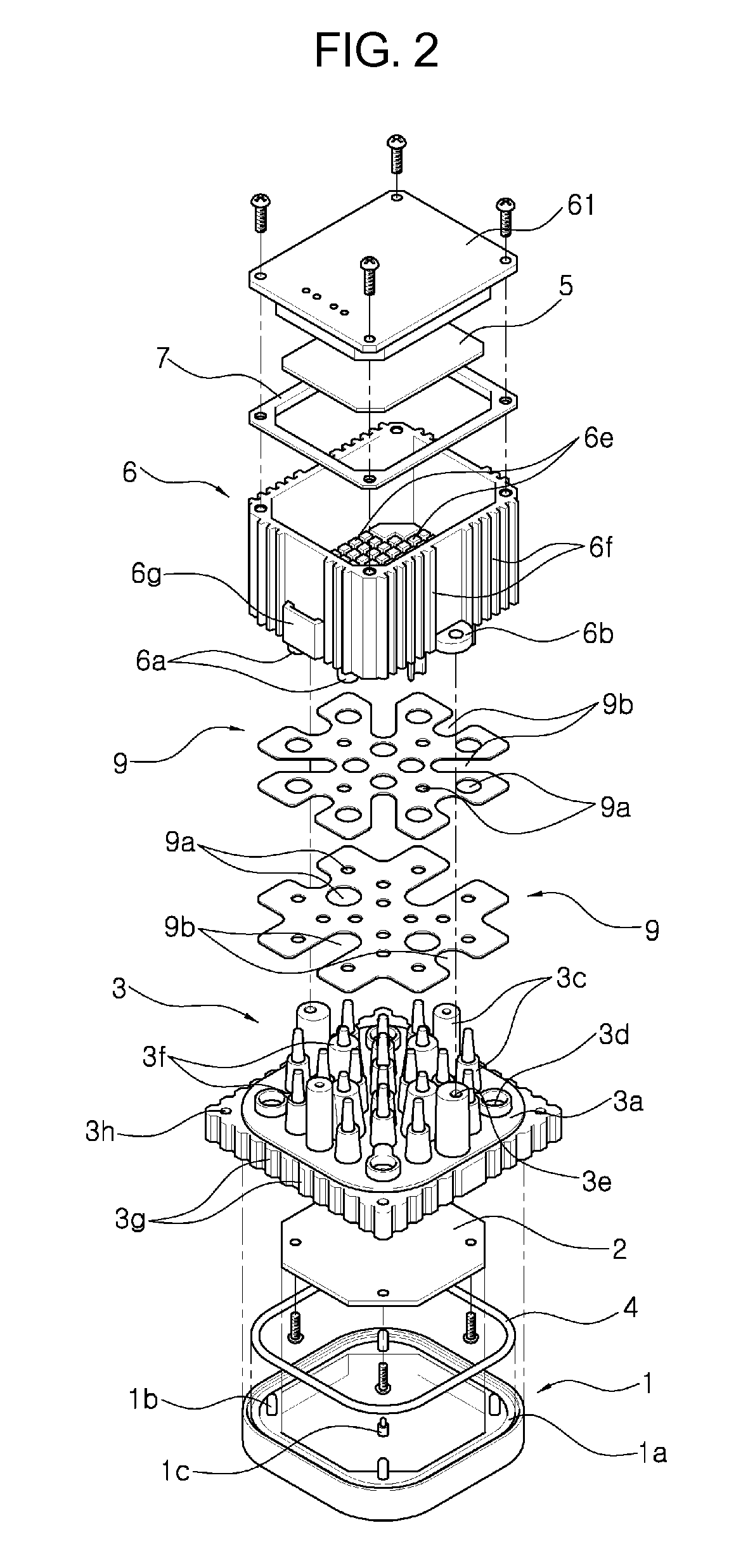Particularly, since the above-mentioned lights use mercury gas, there is a problem in that they cause environmental
pollution when they are discarded.
However, since conventional illuminating apparatuses using light emitting diodes (LEDs) are difficult to solve the problems of heat
radiation, low-capacity light emitting diodes (LEDs) having a
power consumption of 1
watt or less have generally been used.
In other words, when high-capacity light emitting diodes (called power LEDs) having a
power consumption of 1
watt or more, particularly, 2˜10 watts are used, a large amount of heat is generated.
In this case, when the heat
radiation performance thereof is low,
peripheral devices are damaged by heat and the lifecycle thereof is rapidly shortened, so that these conventional illuminating devices cannot practically serve as illuminators.
However, such illuminating devices as traffic lights, security lights, street lights, floodlights, lights for houses or cattle pens, lights for sign boards, downlights, etc. are disadvantageous in that their properties are deteriorated by thermal stress and they easily break down.
That is, when the amount of
electric current flowing to a plurality of light emitting diodes (LEDs) increases so that they can be operated, the amount of heat generated therefrom increases, thus causing the properties of the illuminating apparatuses to deteriorate and causing the illuminating apparatuses to break down.
The
printed circuit board (PCB) malfunctions and breaks down by the thermal stress generated from the LEDs.
However, in this case, there is a problem in that, due to the
metal material constituting the radiating plate, the thickness and volume of the radiating plate increase in order to meet required heat radiating efficiency, which increases the size and weight of each of the illuminating apparatuses.
Moreover, in the case of conventional
light emitting diode type illuminating modules or street lights, since it is possible to prevent the entry of
moisture only when they are tightly closed, it is difficult to install a cooler for efficient heat radiation.
Nevertheless, installing a cooler causes the problem of all kinds of foreign materials including water or
moisture being introduced from the exterior into such illuminating apparatuses as traffic lights, security lights, street lights, floodlights, lights for houses or cattle pens, etc.
Meanwhile, when a radiator used in a light emitting
diode type illuminating module is formed by die-
casting aluminum, there are problems in that the thickness and volume thereof are increased, so that the production cost thereof is increased and the weight thereof cannot be decreased, thus causing the production cost of a lamp stay or a lamp support heavier than a conventional
discharge lamp to increase, and in that a previously-installed lamp stay or lamp support must be replaced by another.
Moreover, when a conventional
discharge-type security light,
floodlight or the like is replaced by a light emitting
diode type security,
floodlight or the like, the original light does not have a sufficient space in which to install a radiator required by the light emitting
diode type security light,
floodlight or the like, so that it cannot be directly used and is discarded, thereby causing the problem of a waste of resources.
However, they are problematic in that the volume and weight thereof are increased.
Further, conventional radiators using a principle of a
heat spreader (called a self-powered
heat pump) have lately been applied to high-price products such as notebooks and the like and LED illuminating apparatuses even though they have high performance but a short lifecycle, are expensive and have a large volume.
However, they are problematic in that the prices of illuminating apparatuses become excessively expensive when they are used in the illuminating apparatuses.
However, they are problematic in that thermal
diffusion is restricted in tightly-enclosed spaces, and in that the
air layer located at the narrow space between the thin films has a thermal insulating effect.
However, among the above two cases, in the case where a power supply converter is independently and directly provided in the LED-type illuminating module, there is a problem in that the heat generated from the power supply converter provided in the LED-type illuminating module cannot be easily radiated because the power supply converter is installed in a housing formed of general
synthetic resin having very low
thermal diffusivity and
thermal conductivity, and the heat generated from light emitting diodes (LEDs) can also be radiated only by a radiator, thus shortening the lifecycle of the LED-type illuminating module including the power supply converter and the light emitting diodes (LEDs).
However, conventionally, similarly to a low-power illuminating module having a power of 8 W or less, heat radiation is carried out only by one radiator integrated with several radiating fins, so that the size of the radiator becomes large or the heat radiation efficiency thereof becomes low at the same size, thereby shortening the lifecycle of the illuminating module itself including light emitting diodes (LEDs).
 Login to View More
Login to View More 


